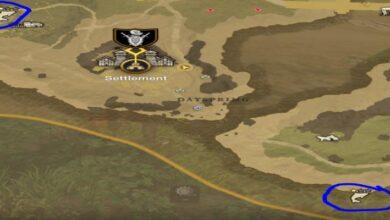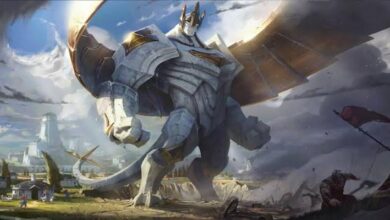The Delmon Young Trade Tree: Unveiling the Art of Turning a Bust into 15 Years of Talent
Introduction: A Pivotal Moment in Tampa Bay Devil Rays History
When Stuart Sternberg acquired the Tampa Bay Devil Rays in the early 2000s, he inherited a team with a struggling identity, a stadium lease that hindered attendance, and one major bright spot – Delmon Young, the best prospect in baseball. Young, having been chosen as the first overall pick in the 2003 MLB draft, showcased immense talent early in his career. As an 18-year-old in Class-A, he boasted a .322 batting average and smashed 25 home runs. The following year, Baseball America crowned him as the Minor League Player of the Year. By 2006, Young had climbed to the top of BA’s prospects list, laying the foundation for the Rays’ future success.
The Unpredictable Nature of Prospects
Prospects are inherently unpredictable, but experienced professionals in the industry have a knack for identifying talent. That year’s top 50 prospects have collectively earned 74 All-Star selections and have accumulated an average of over 16 WAR (and counting) throughout their careers. Even the median player, Billy Butler, achieved All-Star status and retired with nearly 1,500 major league hits.
And then there’s Delmon Young:
- Justin Verlander, 62.5 WAR
- Ryan Braun, 45.0 WAR
- Troy Tulowitzki, 44.1 WAR
… - Ian Stewart, 3.0 WAR
- Dustin McGowan, 2.5 WAR
- Delmon Young, 2.4 WAR
Young ultimately retired with a career WAR equal to what Mike Trout achieved in just the month of April. While he had a few successful seasons, including memorable postseason performances and a viral GIF, he fell short of the lofty expectations set for him.
The Unexpected Redemption: Delmon Young’s Surprising Impact
However, in an unforeseen twist, Young’s presence played a pivotal role in the success of the Tampa Bay Rays. The foundation of one of baseball’s most remarkable trade trees was built upon his talent. Recently, this trade tree sprouted two promising new branches, extending its legacy even further.
The Journey of the Delmon Young Trade Tree
On September 26, 2002, a rainout canceled the final game of the Yankees’ home schedule against the Devil Rays. The Yankees and the Oakland Athletics were competing for the best record in the American League, with the tiebreaker favoring the Yankees. If the Yankees finished half a game behind Oakland, they would make up the game against Tampa on the following Monday to secure victory.
As fate would have it, the rainout proved unnecessary. The Yankees swept the Orioles in Baltimore during the final weekend of the season, matching the A’s win total in one fewer game and ultimately clinching home-field advantage with the tiebreaker. The Devil Rays, tied for the worst record in baseball with the Detroit Tigers, “won” the tiebreaker for the first overall draft pick by having a worse record than Detroit in 2001. It was a straightforward decision – everyone knew that Delmon Young was the clear choice. The Devil Rays selected him.
Five years later, after a disappointing rookie season, Young was traded to the Minnesota Twins by the Devil Rays’ general manager, Andrew Friedman. This audacious move marked a departure from the usual protocol for low-revenue rebuilding teams. Young, who still had five years left on his contract and had just turned 22, was offered to the Twins. In return, the Rays sought young starting pitchers with ace potential – Matt Garza and Jason Bartlett.
The Impact of Garza and Bartlett: A Transformation from Last Place to First
Garza and Bartlett played instrumental roles in the Tampa Bay Rays’ transformation from last place in 2007 to first place in 2008. The Rays, with the second-lowest payroll in the league, defied the odds by reaching the World Series. Garza and Bartlett were vital components of the team’s success.
For three seasons, from 2008 to 2010, the Rays enjoyed sustained excellence, averaging an impressive 92 wins per season, tying them for fourth in the majors. Bartlett emerged as the 45th most valuable position player in baseball, contributing 10.3 WAR, while Garza ranked 35th among pitchers with 8.5 WAR. The combined value generated by these two players far outweighed the contributions of Young and Harris, who only accumulated a total of 1.0 WAR during that period.
Trade of Garza and Bartlett: A New Chapter Begins
By the winter of 2010-2011, Garza and Bartlett had entered the arbitration phase, thus increasing their salary demands. Consequently, the Rays decided to trade both players. In exchange for Bartlett, they received Cole Figueroa, Brandon Gomes, Cesar Ramos, and Adam Russell from the San Diego Padres. Although Bartlett failed to reach his previous heights, the Rays unquestionably gained an advantage in this trade. Gomes, Ramos, and Russell all showcased moments of effectiveness as relievers for Tampa Bay, combining for 376 appearances with a combined ERA of 3.83. Ramos was eventually traded for a promising young pitcher named Mark Sappington, but unfortunately, Sappington failed to fulfill his potential. Figueroa, who played 23 games for the Rays after progressing through the minors, now contributes with his intellect and expertise within the Rays’ front office. For the purposes of our trade tree analysis, we will conclude the lineage at this point.
Continuing the Trade Tree: The Chris Archer Era Begins
Garza, on the other hand, became a highly sought-after trade target during that offseason. Eventually, the Chicago Cubs traded four prospects and Sam Fuld to acquire Garza’s services for the final three seasons before his free agency.
The Rays, in return, reaped the following rewards:
- Sam Fuld, who provided 2.2 WAR and eventually left as a free agent.
- Robinson Chirinos, who contributed 0.2 WAR before being purchased by the Texas Rangers.
- Hak-ju Lee, who never reached the major leagues as a Ray.
- Brandon Guyer, who accumulated 4.4 WAR as a Ray before being traded to the Cleveland Indians for two young players, Nathan Lukes and Jhonleider Salinas, both currently part of the Tampa Bay Rays organization.
- Chris Archer, who emerged as the centerpiece of the trade, producing an impressive 12.1 WAR as a Ray.
The Current State of the Trade Tree and the Promise of the Future
To date, the trade tree has yielded a total of 40.8 WAR from the players acquired in the deals involving Garza, Bartlett, and Archer. This lineage includes notable names such as Justin Verlander, Ryan Braun, Troy Tulowitzki, and Andrew McCutchen. The trade tree has surpassed the achievements of standout prospects from the same class, including Ryan Zimmerman, Justin Upton, Matt Cain, and Jered Weaver. Remarkably, the trade tree’s impact is projected to extend well into the mid-2020s, more than two decades after the selection of Delmon Young. Although we may consider discounting the trade tree’s total by a fraction due to Brendan Harris’ involvement in the original trade, it is crucial to note that the majority of post-Young victories came from pre-arbitration players, whose salaries were significantly lower than their market value. The Rays’ combined investment in these players was roughly equivalent to Justin Verlander’s final season salary with the Detroit Tigers.
Conclusion: The Power of Potential and the Rays’ Exceptional Trade Tree
Building a successful franchise requires more than just one player. The Tampa Bay Rays have not made the playoffs since 2013, and trading Chris Archer is a clear indication that they do not intend to compete this year either. However, they discovered a unique strategy to remain competitive, and their extraordinary trade tree continues to bear fruit.
The story of Delmon Young’s career serves as a cautionary tale, reminding us not to get carried away with potential before it is realized in the major leagues. Nevertheless, potential can be harnessed in various ways. For the Rays, drafting Young laid the groundwork for an exceptional trade tree. This trade tree, which has outperformed numerous star players from the 2006 prospect class, illustrates the power of astute trades and the ability of the Rays’ organization to transform potential into tangible success. The legacy of the Delmon Young Trade Tree is far from over, and its branches will likely continue to flourish for years to come.
Article by [Your Name]




